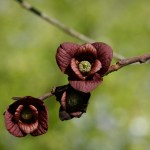The Scoop: Back to the Pawpaw Patch
Published 4:30 pm Friday, August 23, 2024


By Susan Jonas
Garden Club of Danville
Back in 2015, I wrote an article for this newspaper about the newfound interest in pawpaw trees and fruit. I interviewed a man named Jim Latimer who had a pawpaw patch at his home on Herrington Lake. Mr. Latimer was kind enough to present me with a pot of five tiny seedlings from his own trees, as well as some fruit to sample.
I planted those little trees in a back corner of my yard, and they are now rewarding me for my care over the past nine years. To be honest, there wasn’t much care involved. We mulched them with leaves every fall and very rarely watered them in times of drought. Other than that, they took care of themselves, as plants native to this area tend to do.
Now they are heavy with fruit, branches bending towards the ground with the weight of the potato-sized pawpaws, which grow in clusters of two or three. The tallest of the trees reaches about 20 feet and many of the pawpaws are too high to pick.
But I don’t have to climb for them. The ripe fruit falls to the ground, releasing its seductive scent to attract every critter in the neighborhood. It’s a clever trick for dispersing seeds, a bonanza for everyone but me. Possums, squirrels, raccoons, groundhogs, birds, even foxes and probably dogs crave the fruit of this tree.
There have been a few pawpaws on my young trees for three or four years, but never as many as this year. Every summer I look forward to eating them, but something always beats me to it. In the past four years I have eaten exactly one pawpaw. All the others disappear just as they’re about to get ripe. Pawpaws won’t ripen off the tree so there’s no point in picking them green and waiting.
Last year I went to the Extension Service for advice. They sympathized and gave me some thick waxed bags to tie over each green fruit while still on the tree. The animals said, “Oh, look, cute little bags to carry our pawpaws in!” and scurried away with armloads of ripe fruit.
This year I have enjoyed three pawpaws so far and will keep a close watch on my trees. Apparently, an electric fence is the surest way to keep animals from raiding a pawpaw patch, but I’m not going that far.
Members of the Garden Club of Danville visited the University of Kentucky’s experimental pawpaw orchard in Lexington back in 2015. That’s where I tasted my first pawpaw and resolved to plant my own patch. Nobody said anything then about competition from marauding animals. I’m just hoping the harvest will be so bountiful this year that they’ll share with me.
Pawpaw, Asimina triloba, is the largest native fruit in North America. Native Americans ate pawpaws and they were an important food source for the colonists in late summer. The trees grow in 26 states in the east and Midwest, mostly in the wild.
How did Americans forget about this tasty fruit? When we stopped going to the woods for food, the pawpaw was left behind. The aromatic but fragile fruit has a short shelf life, which is why you won’t see them in your average grocery store. They can sometimes be found in late summer at farmers markets and will keep about a week in the refrigerator.
Pawpaws are rich in minerals and Vitamin C. The yellow to orange flesh may be eaten raw, made into ice cream, substituted for bananas in baking, or used as a custard pie filling. Most people say it tastes like a blend of banana custard and mango.
The best thing you can do with a ripe pawpaw is slice it in half and scoop it out with a spoon or just slurp it up from the peel, spitting out the large, hard seeds, which can be toxic if eaten.
With the local foods movement and a return to regional cuisine, interest is growing in pawpaws. Several universities are testing varieties for the best flavor and longest shelf life, hoping to make them a cash crop. Kentucky State University in Frankfort has the largest pawpaw research program in the country.
For gardeners, the trees make an intriguing addition to the landscape. In early spring, their small purplish-brown flowers bloom on the bare branches, attracting pollinators. The large, tropical-looking leaves are rich green all summer and turn buttery yellow in the fall. The dropped fruit is messy if left on the ground, so they are best planted away from the house.
Like blueberries, pawpaws are not self-fertile, which means different varieties must be planted together to ensure fruit. Young trees are still not easy to find in local nurseries, but you may find them at a farmers market or native plant nursery.
If you have enough room and the desire to feed local wildlife, I recommend a small pawpaw patch. Who knows? You may even get to taste one yourself.








